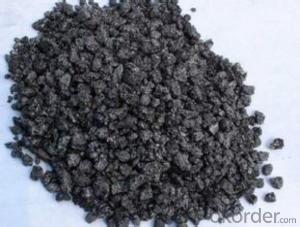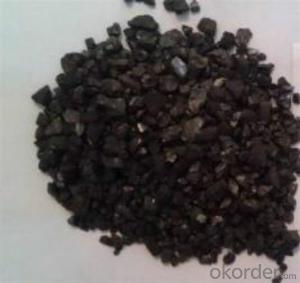FC 99% Calciend Petroleum Coke as Carbon additive
- Loading Port:
- Tianjin
- Payment Terms:
- TT OR LC
- Min Order Qty:
- 20 m.t.
- Supply Capability:
- 2000 m.t./month
OKorder Service Pledge
OKorder Financial Service
You Might Also Like
Brief introduction
Calcined Petroleum Coke comes from delayed coke which extracted from oil refinery. Although Calcined Petroleum Coke contains a little bit higher level of sulfur and nitrogen than pitch coke, the price advantage still makes it widely used during steel-making and founding as a kind of carbon additive/carburant.
BaoSteel is world famous organization. This calcined petroleum coke's raw material is from Bao Steel, which has great quality guarantee. Bao Steel also named this coke as Pitch Coke.
Features
Our product has follwing advantages:
The morphology, chemistry and crystallinity of recarburisers
have a major impact on the overall casting cost. The combined
application and cost benefits, which are derived through the
use of Desulco, enable foundries to manufacture castings in a
highly cost effective manner.
reduces
Recarburiser consumption
Power consumption
Inoculant consumption
MgFeSi consumption
Furnace refractory wear
Scrap rate
Tap to tap time
Slag inclusions risk
Chill
increases
Casting microstructure
Productivity
Process consistency
Specifications
Products | CPC | ||
F.C.% | 98.5MIN | 98.5MIN | 98MIN |
ASH % | 0.8MAX | 0.8MAX | 1MAX |
V.M.% | 0.7 MAX | 0.7 MAX | 1 MAX |
SULFUR % | 0. 5MAX | 0. 7MAX | 1MAX |
MOISTURE % | 0.5MAX | 0.5MAX | 1MAX |
Pictures
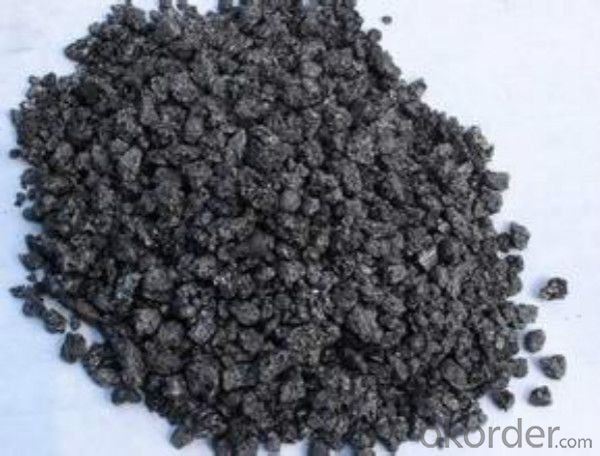
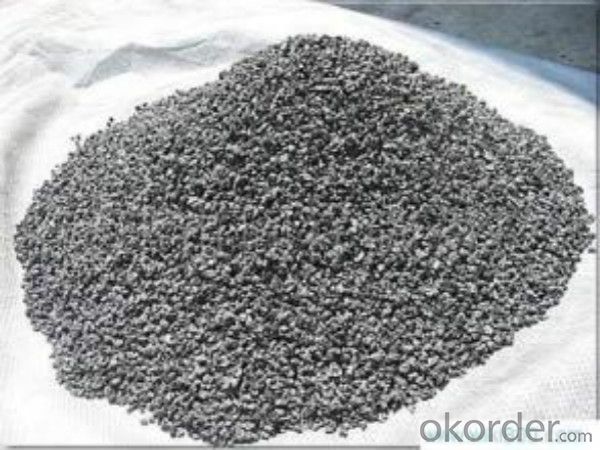
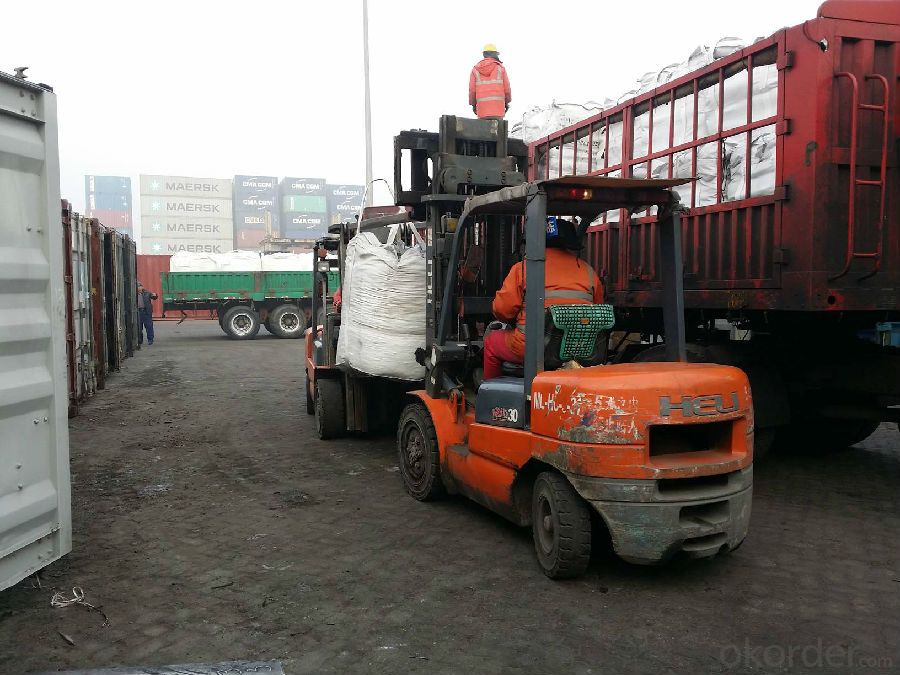
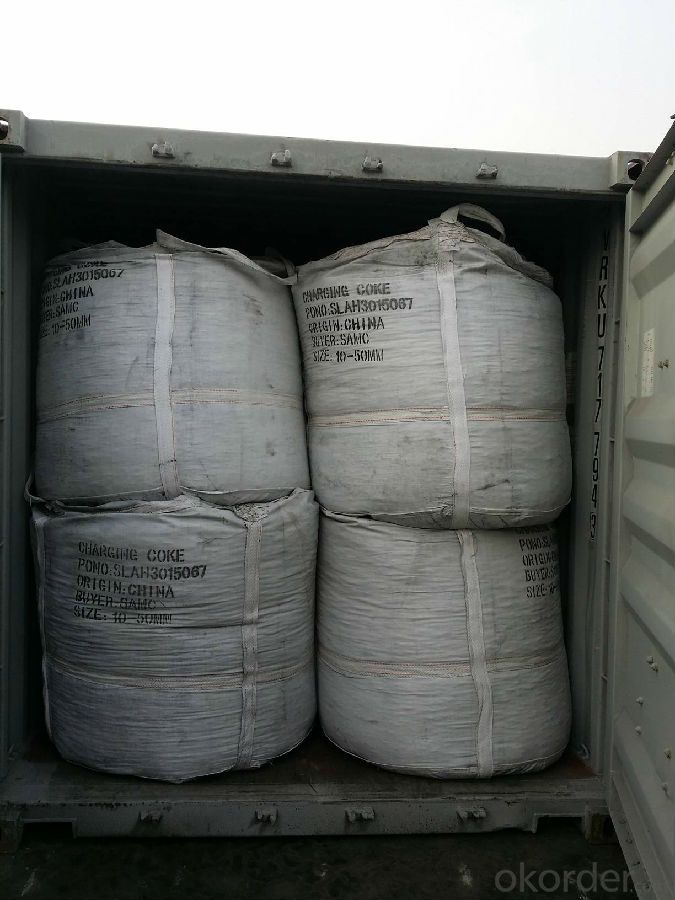
FAQ
1 What is the package?
In jumbo bag with/without pallet
2 What is the delivery time?
25 days after receiving the workable LC or down payment
3 What is the payment term?
T/T, L/C,D/P,D/A
- Q:The printed document will be marked on the document name: carbon copy, no combination number, two links...... What's the meaning of this? What is the connection between the infinite and the two? I MMM
- [1] carbon free copy of a few, several refers to a few colors, that is, a few single! Is that a joint edge is what two of what is triple what you said and so on the boundless contact I estimate that he designer or boss tell you to explain things without Bian Lian refers to not say a contact department or (what) no Bian Lian case is a version of the paper change down on it, but the color edge contact is not the same a version of a few joint Bian Lian have changed several times.
- Q:What are the impacts of carbon emissions on the stability of kelp forests?
- Carbon emissions have significant impacts on the stability of kelp forests. Increased carbon dioxide (CO2) levels in the atmosphere lead to ocean acidification, which has detrimental effects on kelp. As CO2 dissolves in seawater, it forms carbonic acid, lowering the pH of the ocean. This acidification inhibits the growth and development of kelp, making them more vulnerable to stressors and reducing their overall stability. Ocean acidification affects the physiology of kelp in several ways. It hampers their ability to take up essential nutrients, such as nitrogen and phosphorus, which are crucial for their growth. This nutrient limitation weakens the kelp, making them more susceptible to diseases, predation, and damage from storms. Additionally, acidified seawater can hinder the development of kelp spores, impairing their ability to reproduce and regenerate kelp forests. Furthermore, carbon emissions contribute to rising sea temperatures, which also have detrimental effects on kelp forests. As the climate warms, kelp may experience thermal stress, leading to reduced growth rates and increased mortality. Warmer waters can also favor the growth of harmful algae species, which can outcompete kelp for space and resources, further destabilizing kelp forests. The stability of kelp forests is crucial as they provide numerous ecosystem services. They act as important carbon sinks, absorbing and storing large amounts of carbon dioxide from the atmosphere. Kelp forests also provide habitat and nursery grounds for a wide variety of marine species, including commercially important fish and invertebrates. They help maintain the health and productivity of coastal ecosystems by reducing coastal erosion, improving water quality, and supporting biodiversity. To mitigate the impacts of carbon emissions on kelp forests, it is essential to reduce our carbon footprint by transitioning to cleaner and more sustainable energy sources. Additionally, protecting and restoring coastal habitats, including kelp forests, can enhance their resilience to climate change and other stressors. Implementing sustainable fishing practices and establishing marine protected areas can also help preserve and maintain the stability of kelp forests and the valuable ecosystem services they provide.
- Q:How are carbon nanotubes produced?
- Carbon nanotubes are typically produced through a process called chemical vapor deposition (CVD), where a carbon-containing gas is introduced into a high-temperature reactor. Under controlled conditions, the carbon atoms assemble and form nanotubes on a catalyst surface, such as iron or nickel. Other methods, including arc discharge and laser ablation, can also be used to produce carbon nanotubes.
- Q:How is carbon used in the steel industry?
- Carbon is a crucial element in the steel industry as it plays a vital role in the production of steel. The addition of carbon to iron is the fundamental process that transforms iron into steel. By combining iron with a controlled amount of carbon, the steel industry is able to achieve the desired properties such as hardness, strength, and durability. Carbon is primarily used as an alloying element in steelmaking, where it enhances the mechanical properties of steel. The carbon content in steel can vary from as low as 0.1% to as high as 2%, depending on the desired steel grade and application. Low carbon steel, with a carbon content of less than 0.3%, is commonly used for applications that require good formability and weldability, such as automotive bodies and construction materials. On the other hand, high carbon steel, with a carbon content of above 0.6%, is used for applications that require high strength and hardness, such as cutting tools, drill bits, and springs. The presence of carbon in these applications allows for increased wear resistance and improved mechanical properties. Carbon also plays a crucial role in the heat treatment process of steel. Through a process called carburizing, steel can be heated in the presence of carbon-rich gases or solids to increase the carbon content at the surface. This results in a hardened surface layer with improved wear resistance, while maintaining a tough and ductile core. Furthermore, carbon is essential for the steel industry's use of electric arc furnaces (EAFs) in steelmaking. EAFs utilize electricity to melt scrap steel and other raw materials. During this process, carbon is introduced to reduce the oxides present in the raw materials, allowing for efficient steel production. In summary, carbon is widely used in the steel industry to achieve the desired properties of steel such as hardness, strength, and durability. Its addition during the steelmaking process and through heat treatment enhances the mechanical properties of steel, allowing for a wide range of applications in various industries.
- Q:Is carbon a metal or non-metal?
- Carbon is a non-metal.
- Q:What are the consequences of increased carbon emissions on global trade?
- Increased carbon emissions have significant consequences on global trade. One of the most immediate impacts is the potential for stricter environmental regulations and carbon pricing mechanisms imposed by countries and international agreements. This can lead to higher costs for industries and businesses that rely heavily on carbon-intensive activities, such as manufacturing and transportation. As a result, companies may face increased production costs, which can be passed on to consumers in the form of higher prices for goods and services. This can have a negative effect on global trade, as higher costs may reduce demand and hinder international competitiveness. Additionally, industries that do not comply with environmental regulations or carbon reduction targets may face trade barriers or sanctions, further limiting their ability to participate in global trade. Another consequence of increased carbon emissions is the potential for climate change-related disruptions to supply chains. Rising temperatures, extreme weather events, and sea-level rise can damage infrastructure, disrupt transportation routes, and affect the availability and quality of resources. This can lead to delays in production and shipping, increased transportation costs, and a higher risk of supply chain interruptions. These disruptions can have far-reaching impacts on global trade, affecting the flow of goods, services, and investments across borders. Furthermore, increased carbon emissions contribute to global warming, which can have long-term consequences for agricultural productivity and food security. Changes in temperature and precipitation patterns can lead to crop failures, reduced yields, and shifts in agricultural production regions. This can disrupt global food supply chains and lead to price volatility, affecting trade flows and potentially exacerbating food shortages and inequalities. In summary, increased carbon emissions have several consequences on global trade. Stricter environmental regulations and carbon pricing can increase costs for industries, potentially reducing their competitiveness. Climate change-related disruptions to supply chains can lead to delays, increased costs, and interruptions in trade. Lastly, the impact of global warming on agricultural productivity can have significant implications for food security and trade in agricultural commodities.
- Q:Where are carbon fiber sheets and carbon fiber sheets used?
- Fiber cloth can be made into fiberboard. You'd better say the actual product.
- Q:Why is carbon content of stainless steel low?
- This is because the main alloying elements of martensite chromium stainless steel is iron, chromium and carbon, such as Cr is greater than 13%, there is no gamma phase, such as single-phase alloy ferritic alloy, in any heat treatment system does not produce martensite, therefore must join the forming elements of austenite, Fe-Cr two alloy, to expand, C and N are effective elements, C, N elements adding alloy allows higher CR content. Chromium is one of the most important essential elements in martensitic chromium stainless steels, except chromium. In fact, martensitic chromium stainless steel is a kind of iron, chromium and carbon three element alloy C.However, the corrosion resistance of martensitic stainless steel mainly depends on the content of chromium, but the carbon in the steel due to the formation of stable chromium carbide with chromium, but also indirectly affect the corrosion resistance of steel. Therefore, in 13%Cr steel, the lower carbon content, the higher corrosion resistance. In 1Cr13, 2Cr13, 3Cr13 and 4Cr13 four kinds of steel, the corrosion resistance and strength of the order is just the opposite. In addition, carbon has an effect on the mechanical properties of stainless steel matrix.
- Q:How does carbon impact the migration patterns of animals?
- Carbon emissions from human activities contribute to climate change, which in turn affects the migration patterns of animals. Rising temperatures, altered precipitation patterns, and changing habitats disrupt the availability of food, water, and suitable nesting or breeding grounds for many species. As a result, some animals may alter their migration routes, timing, or destinations, while others may struggle to adapt and face population declines or even extinction. The impact of carbon on animal migration underscores the urgent need to mitigate greenhouse gas emissions and protect the ecosystems that support these vital movements.
- Q:Why is the solubility of carbon in austenite larger than that in ferrite?
- The carbon is soluble in the FCC -fe, forming austenite; the carbon dissolves in the body centered cubic alpha -fe to form ferrite. The gap radius of BCC (0.291,0.154) and the gap radius of face centered cubic (0.225,0.414) are large.
1. Manufacturer Overview |
|
|---|---|
| Location | |
| Year Established | |
| Annual Output Value | |
| Main Markets | |
| Company Certifications | |
2. Manufacturer Certificates |
|
|---|---|
| a) Certification Name | |
| Range | |
| Reference | |
| Validity Period | |
3. Manufacturer Capability |
|
|---|---|
| a)Trade Capacity | |
| Nearest Port | |
| Export Percentage | |
| No.of Employees in Trade Department | |
| Language Spoken: | |
| b)Factory Information | |
| Factory Size: | |
| No. of Production Lines | |
| Contract Manufacturing | |
| Product Price Range | |
Send your message to us
FC 99% Calciend Petroleum Coke as Carbon additive
- Loading Port:
- Tianjin
- Payment Terms:
- TT OR LC
- Min Order Qty:
- 20 m.t.
- Supply Capability:
- 2000 m.t./month
OKorder Service Pledge
OKorder Financial Service
Similar products
New products
Hot products
